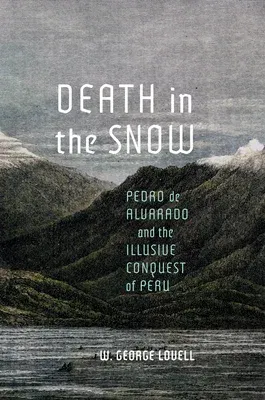Pedro de Alvarado is best known as the right-hand man of Hernando Cortés
in the conquest of Mexico (1519-21) and the ruthless conqueror of
Guatemala some years later. Far less known is his intent to intrude in
the conquest of Peru and lay claim to Quito, a wealthy domain in the far
north of the Inca Empire. To this end, Alvarado constructed a massive
fleet, which sailed south from Central America to what is now Ecuador,
making landfall on 25 February 1534. Engaging both the European and
Indigenous contexts in which Alvarado operated, George Lovell
illuminates this gap in the record, narrating a dramatic story of greed
and hubris. Upon reaching Ecuador, Alvarado's formidable entourage -
some five hundred Spanish combatants and two thousand Indigenous
conscripts - marched from the Pacific coast to the Andean sierra. Though
Quito was his intended destination, he never made it. During a
treacherous transit across the mountains, Alvarado's party was engulfed
by heavy snowfall and numbing cold, which proved the expedition's
undoing. Those who survived the ordeal discovered that other Spaniards -
Diego de Almagro and Sebastián de BeLalcázar, acting in allegiance with
Francisco Pizarro - had reached Quito before them, thereby claiming
first right of conquest. Believing he had no option, if strife between
rival sides was to be avoided, Alvarado sold his costly machinery of
war - men, horses, weaponry, and ships - to those who had beaten him to
the prize. All but ruined, he returned humiliated to Central America.
Death in the Snow brings to light the delusions of one headstrong
conquistador and mourns the loss of untold Indigenous lives, casualties
of Alvarado's lust for fame and fortune.

